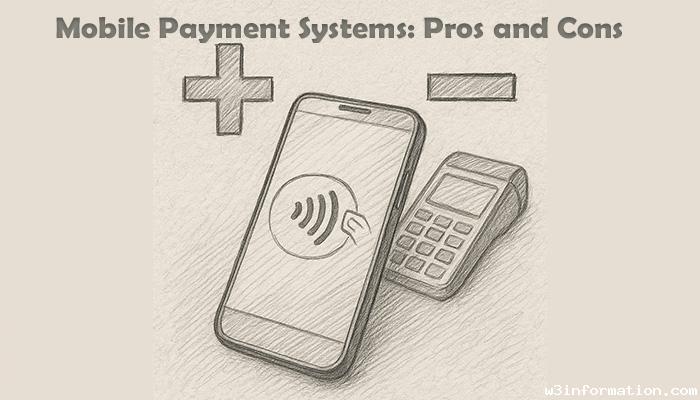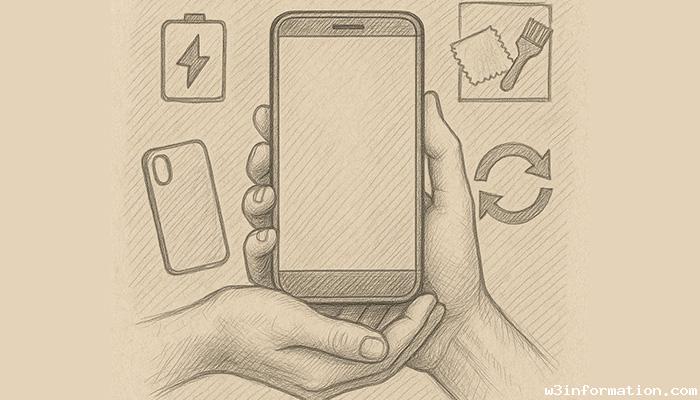Mobile Payment Systems: Pros and Cons
The way individuals perform financial transactions has fundamentally changed due to mobile payment systems. These systems provide users with fast payment options that combine convenience and security when they pay through their smartphones or other mobile devices. Mobile payment solutions now include contactless payments and peer-to-peer transfers along with in-app purchases and these systems are quickly spreading across the globe. Similar to any technological development, mobile payments have their unique benefits and difficulties to consider. This blog examines the benefits and drawbacks of mobile payment systems to assist you in understanding their effect and determining their suitability for your needs.
Pros of Mobile Payment Systems
1. Convenience and Speed
Mobile payment systems enable users to conduct transactions swiftly and conveniently without the need to carry physical money or credit cards. Using your phone to tap payments or scanning QR codes at checkout reduces the time customers spend completing purchases which leads to more efficient transactions.
- Users don’t need to bring wallets or memorize PIN numbers with mobile payment systems.
- Instant payment methods enable quicker service delivery in retail stores, dining establishments, and throughout the web.
- Mobile payment systems provide unified access to loyalty programs and digital receipts.
2. Enhanced Security
Mobile payment platforms protect user data and diminish fraud risks through advanced security measures that include tokenization and encryption along with biometric authentication systems like fingerprint or facial recognition.
- Merchants never receive payment information directly.
- Transactions require authentication, reducing unauthorized use.
- The combination of immediate alerts along with account freezing capabilities strengthens security measures.
3. Accessibility and Financial Inclusion
Mobile payment technology delivers financial services to unbanked and underbanked populations through smartphone-based transactions that bypass conventional bank accounts.
- Enables quick money transfers and bill payments.
- Facilitates microtransactions and peer-to-peer payments.
- Broadens access to digital economies.
4. Integration with Other Services
Mobile payment systems enhance financial management and shopping experiences by integrating with budgeting applications as well as loyalty rewards and e-commerce platforms.
- Automatic tracking of expenses.
- Easier redemption of rewards and offers.
- Streamlined checkout across multiple platforms.

Cons of Mobile Payment Systems
1. Dependency on Technology and Connectivity
Users need a functional smartphone and internet connection to make mobile payments plus merchants must accept these payment methods.
- Transactions can fail due to poor internet connections or device problems.
- Several merchants do not support every available mobile payment method.
- Mobile wallets become inaccessible when battery power runs out.
2. Privacy Concerns
Sharing sensitive financial and personal information through mobile payments creates data privacy concerns.
- There exists a danger that data breaches or unauthorized tracking could occur.
- Certain applications transfer user data to external parties for sharing purposes.
- Users need to have confidence in service providers for secure handling of their financial details.
3. Security Risks
Mobile payments still face threats from fraudulent activities and various cyber attacks even with advanced security measures.
- Smartphones face security threats from malware while fake payment apps pose additional risks.
- Vulnerabilities in unsecured public Wi-Fi networks.
- Social engineering scams targeting mobile payment users.
4. Limited Acceptance and Compatibility
The acceptance of mobile payments varies between merchants and regions which restricts how useful they can be.
- Small businesses or older establishments might not have the necessary technology infrastructure to process mobile payments.
- Some mobile payment systems aren't compatible across different platforms as shown by Apple Pay versus Google Pay.
- Using mobile payments internationally can result in access restrictions and extra fees.
Conclusion
Users gain several advantages from mobile payment systems through increased convenience and security features while they expand financial access to more people. These payment systems streamline payment processes while showing excellent compatibility with today's technologies and lifestyles. Mobile payment systems introduce complications such as dependence on technology and issues related to user privacy and security threats. With mobile payments becoming more widespread users must carefully assess their advantages and drawbacks before adopting protective strategies including trusted apps and device security maintenance for secure and smooth payment operations.
 How to Extend Your Mobile Device’s Lifespan
How to Extend Your Mobile Device’s Lifespan
 Mobile Hotspot Devices: What You Need to Know
Mobile Hotspot Devices: What You Need to Know
 Mobile Web Design Trends
Mobile Web Design Trends
 The Importance of Mobile Data Encryption
The Importance of Mobile Data Encryption
 Mobile Gaming Performance: How to Choose the Right Device
Mobile Gaming Performance: How to Choose the Right Device
 The Rise of Foldable Smartphones
The Rise of Foldable Smartphones